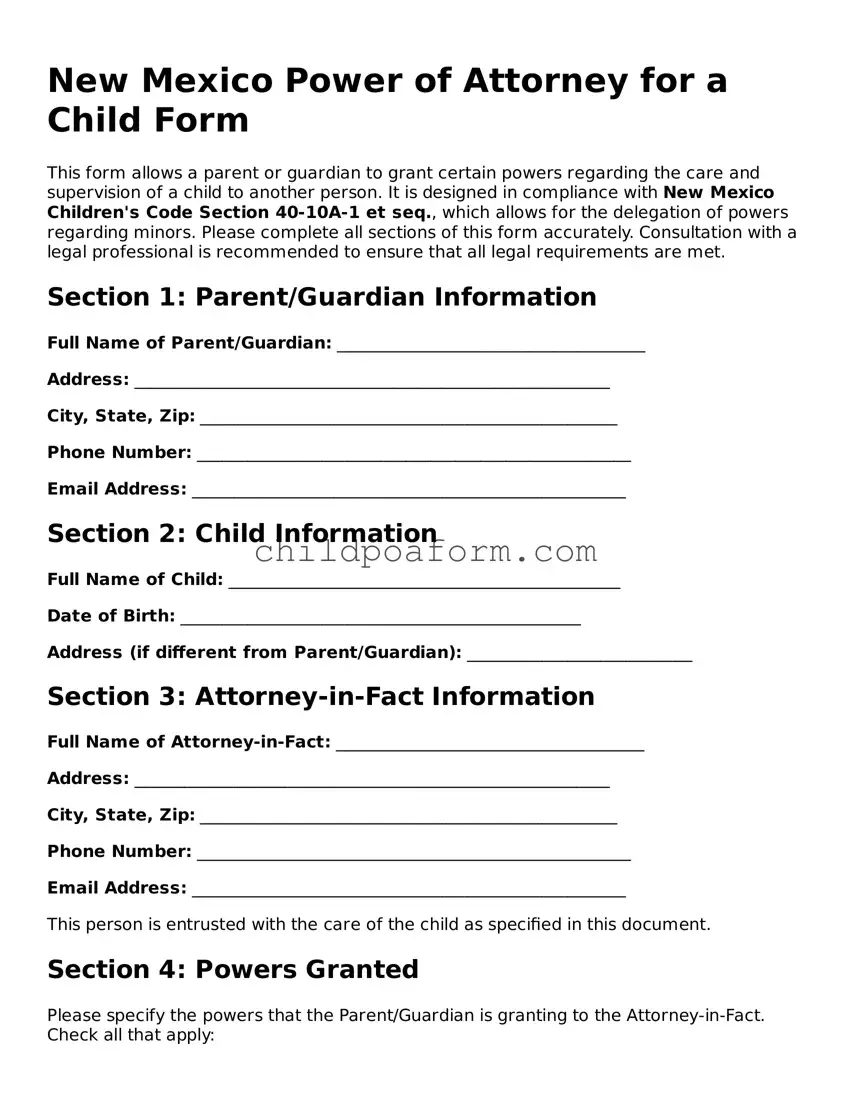Instructions on Utilizing New Mexico Power of Attorney for a Child
Filling out the New Mexico Power of Attorney (POA) for a Child form is a significant step for ensuring a child's well-being and safety when the primary guardians or parents are not available to make decisions. This legal document allows a designated adult, referred to as the agent, to make decisions and act on behalf of the child in areas such as education, healthcare, and other important matters. It is crucial for the person completing this form to pay close attention to detail and provide accurate information to ensure the document meets legal requirements and effectively conveys the intended authority.
- Gather all necessary information, including the full legal names and addresses of the child, the parent(s), and the appointed agent.
- Start by entering the date on which the POA will become effective. This is typically the day the form is completed and signed.
- Fill in the child’s full legal name and date of birth in the designated sections.
- Enter the full legal names and addresses of the parent(s) or current legal guardian(s) granting the power.
- Provide the full legal name and address of the agent who will be given authority to make decisions for the child.
- Specify the powers being granted to the agent. This should include what decisions the agent is authorized to make on behalf of the child, such as those relating to medical care, education, and extracurricular activities.
- Include any special instructions or restrictions to the agent’s powers if necessary. This could involve limitations on certain decisions or define conditions under which the POA will no longer be valid.
- Note the termination date of the POA. This is when the document will no longer be in effect. If no specific date is provided, it will typically expire one year from the date of signing.
- Review the completed form to ensure all information is accurate and complete. Errors or omissions can affect the validity of the document.
- Sign the form in the presence of a notary public. The parent(s) or legal guardian(s) granting the power need to sign the document and have it notarized to be legally effective.
- Provide the agent with a copy of the signed document. It's also advisable to keep a copy for personal records and provide another to any relevant institutions or individuals, such as schools or healthcare providers.
After completing the Power of Attorney for a Child form, it's important to discuss the new arrangement with the appointed agent to ensure they understand their responsibilities and the scope of authority they've been given. The agent should be prepared to act in the child's best interest and make decisions that align with the wishes and guidelines provided by the parent(s) or guardian(s). Proper completion and handling of this document can provide peace of mind knowing that the child's affairs will be managed responsibly in the parent's or guardian's absence.
